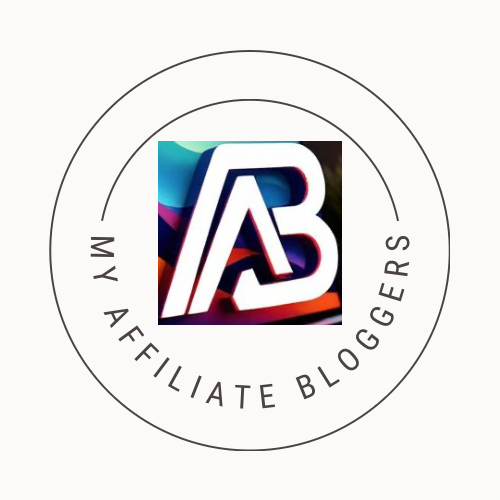Craft Compelling Content That Speaks to Your Audience
Creating content that connects with your readers is like building a bridge, they need to know you understand where they are and where they want to go.
Crafting compelling content is not about just tapping away at a keyboard; it’s about tailoring your words to meet your audience right where they need you most. Take note on how YOU search for things online.
This connection is what separates good blogs from memorable ones. Let’s dive into how you can make that connection.
Key Takeaways
Essential Tips for Engaging Content
- Know who you’re talking to: Understand your audience’s needs, emotions, and motivations before writing a single word.
- Keep it real: Use language that feels natural and relatable—it should sound like a one-on-one conversation, not a lecture.
- Hook them fast: Start with something bold, a question they’ve been asking, or a line that makes them stop and pay attention.
- Every word matters: Skip the fluff. Make sure each sentence earns its place by being clear, vivid, and purposeful.
- Show, don’t tell: Paint mental pictures that make readers feel, see, or imagine what you’re describing.
- Keep the energy high: Short sentences, varied pacing, and active voice create movement and hold attention like a magnet.
- Stay focused: Stick to the main idea, and don’t wander off into unnecessary detail or boring tangents.
- Wrap it up strong: Leave them feeling something—curiosity, motivation, or excitement—so they remember what you said long after they stop reading.
What is Compelling Content?
Compelling content grabs your readers by giving them exactly what they want; answers, solutions, or a fresh perspective. It’s about knowing who your audience is, what’s keeping them up at night, and speaking in a way that feels human and real.
I start strong, maybe with a jaw-dropper of a fact, a vivid story, or a bold promise, and I don’t let up. Every word has a purpose. I avoid fluff like it’s a plague, focus on their pain points, and offer steps they can act on right away.
People don’t want lectures; they want connection, so I keep it conversational and relatable, almost like we’re sitting across a table over coffee.
And yeah, I sprinkle in keywords because being helpful doesn’t mean sacrificing findability. Every piece has to engage, solve, and leave readers feeling like they’ve gained something, like their time was well spent.
They have a desire for “original content”, so share your personal experiences to create a better connection point.
Choosing the Right Tone and Style
Matching your tone and style to suit your readers is non-negotiable if your goal is to truly connect.
Imagine you’re at a dinner party. If your friends are cracking jokes and swapping stories, you wouldn’t respond with a formal business pitch, right? Your audience expects the same thoughtful consideration.
Ask yourself: Are my readers looking for no-nonsense advice, or do they value a touch of humor and storytelling? For example:
- A blog targeting beginners in affiliate marketing might benefit from an encouraging and relatable tone.
- Meanwhile, an audience of accomplished entrepreneurs might appreciate a more polished, data-driven style.
The trick is to maintain consistency in your voice, so your readers feel that they can trust and relate to your brand over time. A voice that’s friendly but knowledgeable keeps things informal and engaging while still contributing valuable insights.
Creating Content Around Audience Pain Points
One surefire way to keep your content relevant and sticky? Focus on solving real problems.
Think of addressing your audience’s pain points as being their guide through unchartered waters. You’re not just handing out a map, you’re walking alongside them, solving challenges step by step.
To identify these issues, consider:
- Comments on your blog: Notice recurring questions or concerns.
- Social media threads: Look for trending topics in your niche.
- Direct surveys or polls: Simply ask your audience what they need help with.
When readers see solutions to their struggles, they’re more likely to connect with your content and return. Consider writing actionable guides or how-to lists, so they leave feeling equipped and empowered.
Not sure where to start? Explore examples like this Wealthy Affiliate Review to see how focusing on pain points and opportunities can engage readers proactively.
Incorporating SEO to Align with Search Intent

Understanding your audience also means knowing what they’re searching for. This is where SEO rides shotgun to your content strategy.
By diving into keyword research, especially long-tail keywords—you can anticipate specific questions your audience has and craft content tailored to those searches.
Think about it: If someone types “how to start a profitable blog in 2025,” they’re not just curious, they’re ready to act. Meeting your readers with content that’s carefully aligned with these search intents demonstrates that you’re tuned in to their needs.
Here’s how to get it right:
- Use free tools like Google Keyword Planner or Ubersuggest to research keywords in your field.
- Focus on long-tail phrases that align with your niche’s pain points, such as “beginner blogging tips” or “best SEO plugins for new bloggers.”
- Sprinkle these naturally into your headlines, subheads, and body text to keep them impactful without sounding robotic.
SEO might be technical, but at its heart, it’s about understanding and meeting your audience where they are. For more advice, check out our review of tools like Wealthy Affiliate to see how digital resources can bolster your strategy.
By fine-tuning your tone, solving pain points, and using SEO to tap into search intent, you can make your blog not just a space for sharing ideas but a go-to destination that truly speaks to your audience.
This approach transforms passive readers into an engaged community that trusts and values what you bring to the table.
Staying Consistent and Evolving with Your Audience
Your readers are at the heart of your blog’s success, but staying relevant often feels like hitting a moving target.
Consistency in posting builds trust, while evolving with your audience ensures you’re meeting them where they are, not where they were.
Let’s explore how these two principles work together to strengthen your blog’s foundation.
The Importance of Regular Posting
Consistency is more than just showing up, it’s about making readers feel they can rely on you.
Imagine visiting your favorite shop only to find it closed unexpectedly. Frustrating, right? That’s how readers feel when a blog they value becomes inconsistent. A regular posting schedule reassures your audience that you’re invested in the conversation they care about.
More than just routine, consistency creates anticipation. If readers know you publish fresh content every Tuesday, they’ll carve out time to check in.
You’re not just a blog, they’ll think of you as an essential bookmark in their week.
But consistency doesn’t mean churning out content for content’s sake. Each post must remain relevant and interesting, blending value with dependability. This balance ensures your blog feels both dynamic and accessible.
For bloggers looking to enhance their process, integrating planning tools can make scheduling content feel less overwhelming. By building a system for ideas and deadlines, you sidestep burnout while consistently delivering quality posts.
Adapting to Changing Audience Preferences

Trends shift, and so do your readers’ interests. Ignoring this is like trying to sell a landline phone in a smartphone world. Just as your audience evolves, your blog must adapt.
Pay attention to the clues: Are certain posts getting more engagement? Have readers started requesting specific topics? These breadcrumbs help you course-correct your content strategy.
Feedback is a gold mine. Keep an ear to the ground through comments, emails, or social media conversations.
If a recipe blog sees a spike in interest around low-carb dishes, that’s a signal to lean in. Trends like remote work, for example, have influenced everything from business blogs to personal finance advice in recent years.
Pinpointing how cultural shifts affect your niche ensures your posts stay fresh and compelling.
This isn’t just about hopping on the latest bandwagon; it’s about thoughtful evolution. Stay rooted in your core values, but allow flexibility to keep your audience engaged.
Being known as someone who stays relevant is powerful, it tells readers you’re fully present and invested in their current needs.
By committing to consistency while remaining flexible, you strike a balance that fosters both trust and excitement. Blogging isn’t just about writing, it’s about staying attuned to the people behind the pageviews.
Conclusion
Great content doesn’t just inform, it leaves a mark. By focusing on what your audience truly cares about, you can create posts that feel like they were written just for them.
The power isn’t in perfection; it’s in making people feel seen. Write with heart, and you’ll stand out in a noisy space. Writing helpful content when everything has already been said before? Here’s some helpful advice⬆️
Writing isn’t just about putting words on a page; it’s about creating connection. When you craft compelling content that truly speaks to your audience, you’re building trust, sparking interest, and showing that you get them.
So, sit down, tune in, and let your words make that connection come alive. Your readers are waiting so don’t disappoint them.
How to Create Content That Connects:
FAQs for New Bloggers
It might be too focused on what you want to say, not what your audience cares about. Dig into their challenges, questions, or needs—then write with those front and center. Clear language and a relatable tone make a big difference too.
Go where they are. Read comments on social media, forums, or competitor blogs. Better yet, ask directly through polls, surveys, or casual conversations. Pay attention to recurring themes.
Start bold. A question, a surprising fact, or a vivid scene can hook your reader. Avoid rambling intros—jump straight into something intriguing or useful. The first few lines matter most.
Write like you’re talking to a friend—but an informed one. Ditch fancy words and avoid overloading with facts. Keep it conversational but highlight your expertise through practical insights.
Enough to fully answer the reader’s question, no more, no less. Sometimes that’s 500 words; other times it’s 2,000. Quality over quantity always wins.
It happens, but there’s always something fresh to explore. Revisit old posts and update them. Scan audience questions. Break a big topic into smaller pieces. Inspiration is everywhere—just stay curious.
If they add value or make your point stronger, absolutely. Readers connect with real, relatable experiences. Just keep them short and tie them back to the topic.
Consistency beats frequency. Weekly is a great goal if you can stick to it, but only if the content stays high quality. Don’t sacrifice substance to hit arbitrary deadlines.
Yes, but don’t overthink it. Focus on writing useful, clear content first. Sprinkle in keywords naturally, use simple headers, and write for humans—search engines will follow.
Both can work, but it depends on your goals. A niche helps you build authority and a loyal audience faster. Covering multiple subjects offers variety but may dilute your focus.
That depends on who’s reading. For most blogs, conversational and approachable works best. Speak directly, don’t overcomplicate, and sound like yourself. Authenticity trumps everything.
Definitely. Images, charts, or infographics break up text and hold attention. Even a simple photo adds life to your post. Aim for visuals that complement your points, not just decoration.
Check your stats—engagement, comments, shares. But don’t stop there. If readers email you or keep coming back, you’re doing something right. Good content solves a problem or sparks emotion.
It’s more than okay—it’s smart. Update or expand older posts to keep them relevant. New readers might not have seen them, and even loyal ones appreciate fresh takes on old ideas.
Deliver value, every time. Write posts that help, inspire, or entertain. Mention the next topic at the end of your post, or tease what’s coming soon. It builds anticipation naturally.
What’s one thing most new bloggers overlook?Editing. A great idea can fall flat if the post feels rushed or messy. Step away after writing, then trim the fluff and sharpen your points. Polished content stands out.













